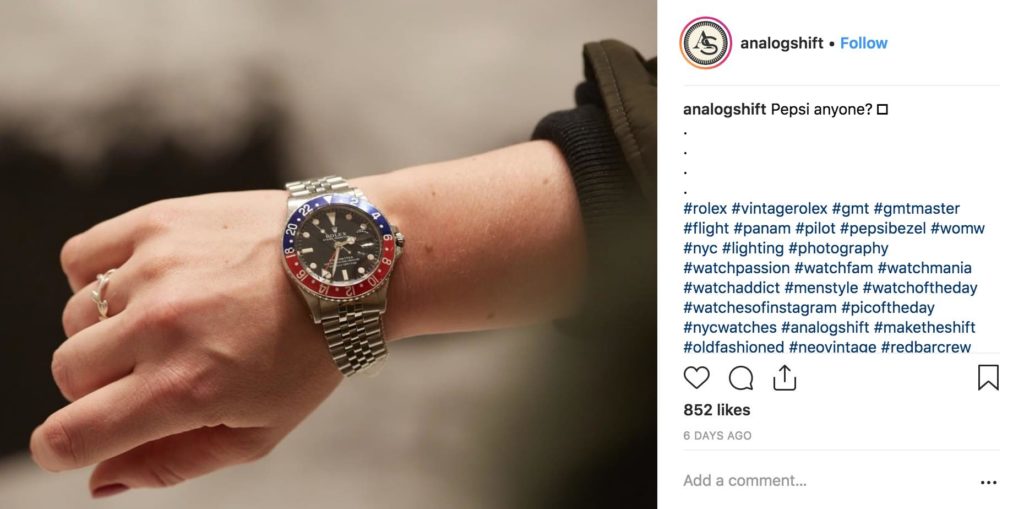How Luxury Watch & Fine Jewelry Companies are Courting Younger Consumers
While recruiting executives for high-end jewelry and watch companies, we know that the sales process for these companies is very specific and time-tested. Sales executives tap into well-established points of distribution in department stores, specialty shops and airports to reach the type of customer they want, an individual who is ready to spend more than $1,000 on a high-quality wearable that has a specific look and craftsmanship that sets it apart.
Changing demographics and the growth of the internet have changed every facet of retail, and have of course not left jewelry and watches untouched. How do you sell the craftsmanship of a fine timepiece to a “Gen Z” consumer who has come of age with a smartphone glued to their hand or a quality piece of jewelry to a millennial who is addicted to fast fashion?
The answer to that question lies in being faithful to some of the qualities that have made brands in the space so legendary while also being open to key business innovations.
It’s true that the millennial and Gen Z consumer don’t make decisions in the same way Boomers or Gen Xers do. For one thing they are much more aware of what their friends are buying and consumer, and above all else, dedicating to avoiding #FOMO at any cost. Instagram, therefore, has provided a surprisingly fertile marketing space for the specialized niche world of luxury analog timepieces, aka “dumb watches.” Design aficionados flock to younger-skewing shops like analog/shift, which maintains an Instagram account of luxury timepieces with almost 90,000 enthusiastic followers. The uniquenesses, design-quality and #throwback value of the luxury watch industry has made it prime Instagram-fodder after all.

New Sales Model
Conventional wisdom has had it that online is not the place to make a luxury sale for a big ticket item that a customer will want to ponder and actually try on. But innovations in online retailing for items that were traditionally not thought to be online friendly (think of Casper for mattresses and Warby Parker for eyeglasses) has proven to be a boon in courting the fickle millennial. In 2017, Tiffany & Co bucked almost 200 years of history by striking a partnership with the online retailer Net-a-Porter to sell a selection of their items through Net-a-Porter channels, a first for the company. It’s just one example of how an established brand is exploring new spaces and new collaborations.
Influencers
The jewelry and watch industries are willing to work with influencers — but only when the partnership feels authentic. Watch brands tap into collector culture on Instagram, while jewelry makers have recently worked with such major names as Rhianna, Elle Fanning, Bella Hadid, Lady Gaga and Zoe Kravitz.

New purchasing dynamics
For a long time jewelry purchases have been driven by gifting, with the ultimate expression of that arrangement being the diamond ring bestowed by a man upon his besotted. As familial arrangements shift and women’s role in the workforce grows ever more solidified, the buzzword around the smarter jewelry brands is the concept of “self-purchase.” Why? Today’s millennial woman have the disposable income to spend and are steeped in the language of self-care and self-empowerment.
In 2016, Zales acquired a collection called Love and Pride from New York jeweler Udi Behr geared toward the expanding LGBT market now nationally shopping for wedding rings. The collection features ladies’, men’s and unisex-style jewelry, ranging from under $200 (for anodized titanium) to the $3,000 price point for a more traditional 1-carat diamond ring set in white gold.
Embracing innovation
Another way established companies are moving into a new age is opening their doors to new and younger players. Movado recently acquired two companies, MVMT and Olivia Burton, both founded by millennials and targeted toward the millennial consumer. These design conscious timepieces is allowing Movado to diversify its price points and product lines and perhaps get that younger consumer develop a long-term appetite for quality and luxury.



